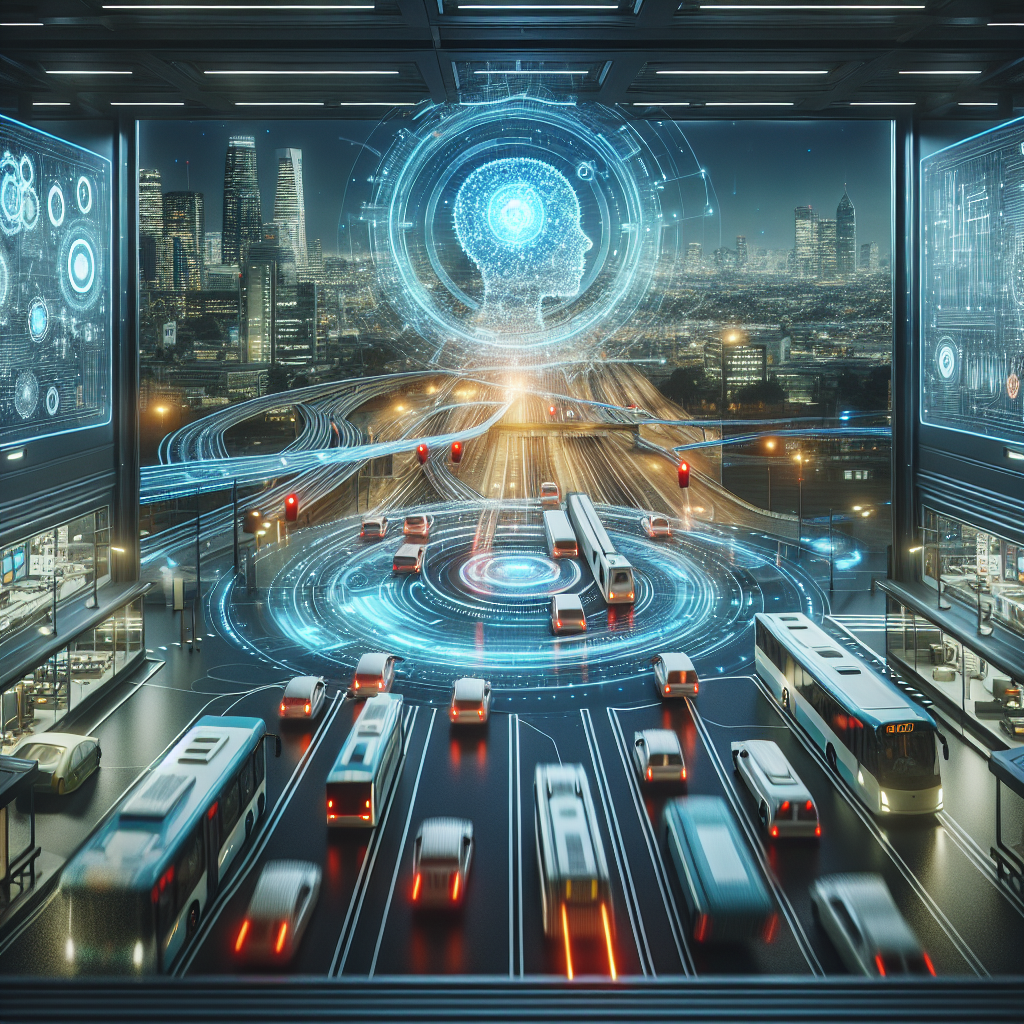The Role of AI in Improving Public Transportation Systems
Public transportation plays a crucial role in the daily lives of millions of people around the world. It provides an efficient and cost-effective way for individuals to travel to work, school, and other destinations. However, public transportation systems are often plagued by challenges such as delays, overcrowding, and inefficiencies. This is where artificial intelligence (AI) comes into play, offering innovative solutions to improve the overall performance of public transportation systems.
AI technology has the potential to transform the way public transportation operates, making it more reliable, efficient, and user-friendly. By leveraging AI algorithms and machine learning capabilities, transportation agencies can analyze vast amounts of data in real-time to optimize routes, schedules, and services. This can help reduce congestion, improve service reliability, and enhance the overall passenger experience.
One of the key ways in which AI is enhancing public transportation systems is through predictive maintenance. By using sensors and data analytics, AI can predict when equipment and infrastructure are likely to fail, allowing maintenance crews to address issues proactively before they cause disruptions. This can help reduce downtime, improve reliability, and extend the lifespan of assets, ultimately saving time and money for transportation agencies.
AI technology is also being used to optimize traffic flow and reduce congestion on roads. By analyzing traffic patterns and adjusting signal timings in real-time, AI can help improve the efficiency of public transportation services, reducing travel times and enhancing the overall passenger experience. Additionally, AI-powered systems can provide real-time updates and alerts to passengers, helping them plan their journeys more effectively and avoid delays.
Another area where AI is making a significant impact on public transportation systems is through the development of autonomous vehicles. These self-driving vehicles have the potential to revolutionize the way people travel, offering a safe and efficient alternative to traditional modes of transportation. By leveraging AI algorithms and sensors, autonomous vehicles can navigate roads, interact with other vehicles, and respond to changing traffic conditions without human intervention. This can help reduce accidents, improve traffic flow, and enhance the overall efficiency of public transportation systems.
In addition to improving the operational efficiency of public transportation systems, AI technology can also enhance the overall customer experience. By analyzing passenger data and preferences, AI-powered systems can personalize services and provide tailored recommendations to passengers. This can help improve customer satisfaction, loyalty, and retention, ultimately leading to a more sustainable and successful public transportation system.
Overall, AI has the potential to revolutionize the way public transportation systems operate, making them more efficient, reliable, and user-friendly. By leveraging AI algorithms and machine learning capabilities, transportation agencies can optimize routes, schedules, and services to improve the overall performance of public transportation systems. As AI technology continues to evolve, we can expect to see even more innovative solutions that will transform the way people travel and enhance the overall quality of public transportation services.
FAQs
Q: How is AI being used to improve public transportation systems?
A: AI is being used to optimize routes, schedules, and services, predict maintenance issues, reduce congestion, and enhance the overall passenger experience.
Q: What are some of the benefits of using AI in public transportation?
A: Some of the benefits of using AI in public transportation include improved reliability, efficiency, and customer satisfaction, as well as reduced maintenance costs and congestion.
Q: How can AI help reduce traffic congestion?
A: AI can help reduce traffic congestion by analyzing traffic patterns, optimizing signal timings, and providing real-time updates and alerts to passengers.
Q: What role do autonomous vehicles play in improving public transportation systems?
A: Autonomous vehicles have the potential to revolutionize public transportation systems by offering a safe and efficient alternative to traditional modes of transportation.
Q: How can AI personalize services for passengers?
A: AI can personalize services for passengers by analyzing their data and preferences to provide tailored recommendations and enhance the overall customer experience.

